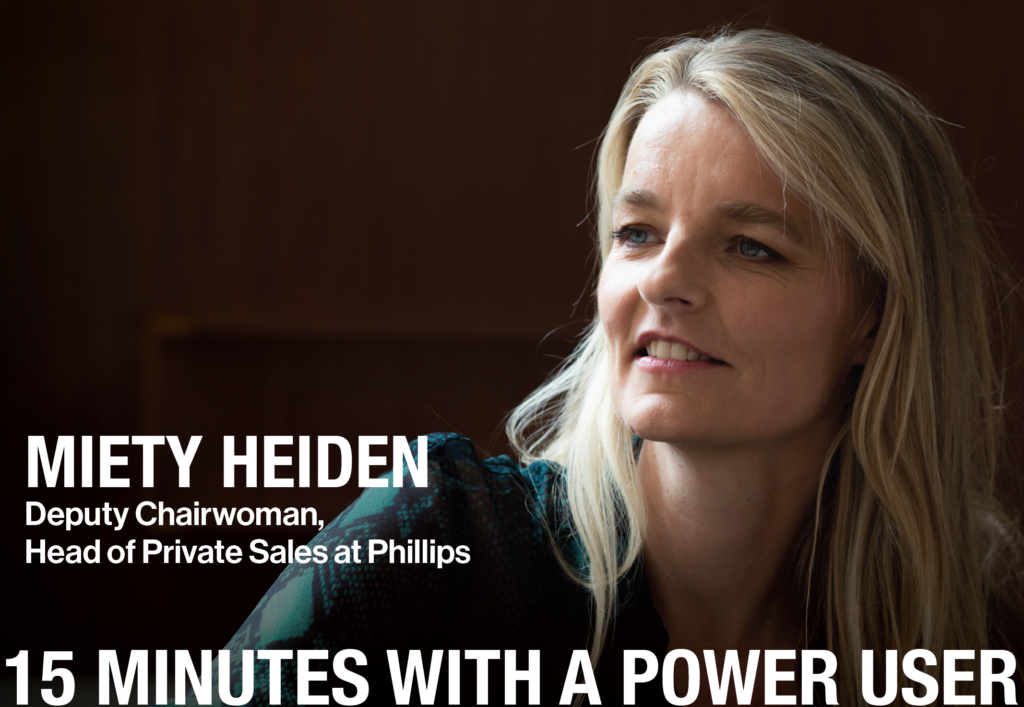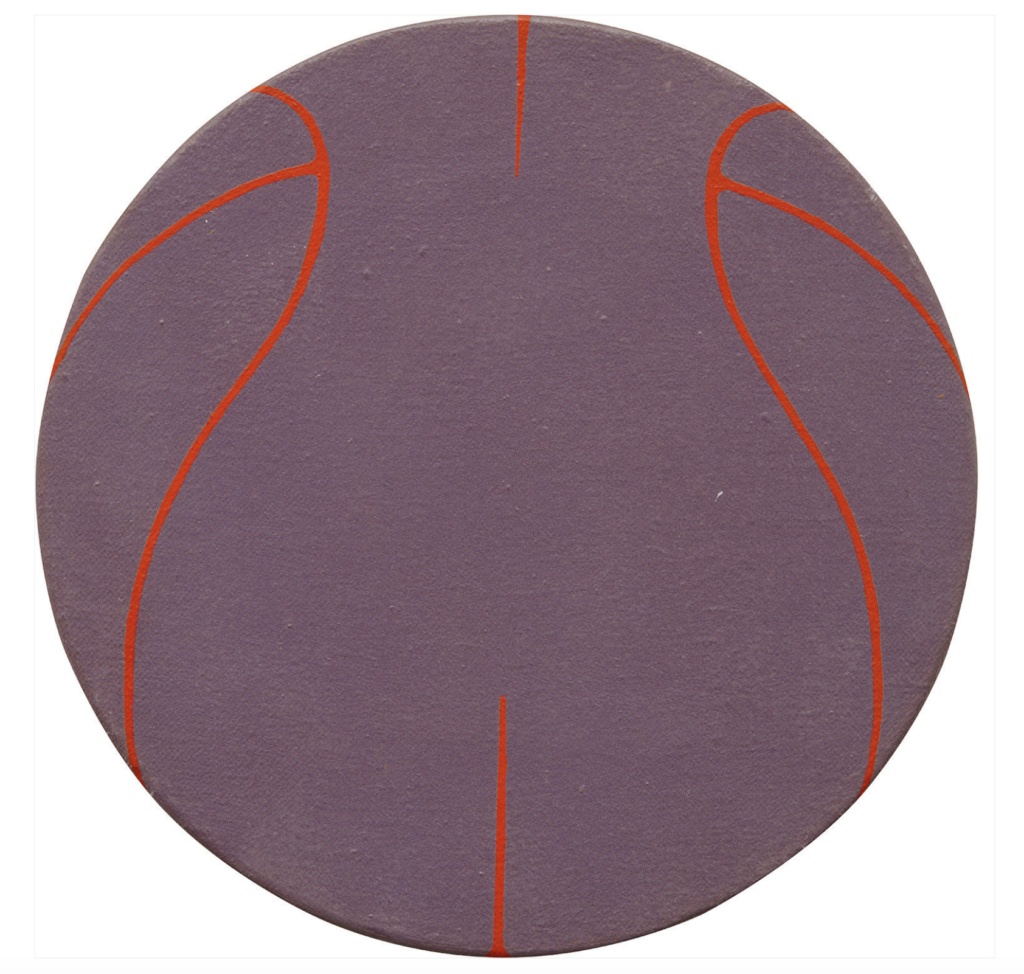People
15 Minutes With a Price Database Power User: Phillips’s Head of Private Sales on Why Collectors Still Want to See Art in Person
We spoke to Miety Heiden about how online sales will—and will not—change the art market.

We spoke to Miety Heiden about how online sales will—and will not—change the art market.

Artnet Price Database Team

There is only one tool trusted by art-world insiders to buy, sell, and research art: the Artnet Price Database. Its users across industries—from auction houses to museums, galleries and government institutions—represent the art world’s most important players. We’re taking 15 minutes to chat with some of the Artnet Price Database’s power users to get their take on the current state of the market and how they’re keeping up with the latest trends.
Miety Heiden’s job as a deputy chairperson and head of private sales at Phillips allows her to work with many of the world’s top collectors. “With private sales, it is all about the speed at which you can make a purchase, and not being confined to auction seasons,” she says. “The main appeal for collectors is instant satisfaction.”
Even during the current pause on in-person business, Heiden has continued to make waves for Phillips, negotiating sales of works by Banksy, Yayoi Kusama, and Bruce Nauman.
We had the chance to catch up with Heiden about everything from how online sales will change the art market, to what makes an online viewing room stand out from the crowd.
How has the role of private sales within the larger art market shifted over the past decade?
Auction houses have been selling privately since the 1980s. Nowadays, we are seeing more “public” private sales, including selling exhibitions and, of course, online viewing rooms. There has been a greater shift to public private sales than anything else.
You had an important hand in Phillips’s response to the growing interest in historically marginalized and underrepresented black artists, including the 2019 exhibition, “American African American.” Since then, how have you seen this segment develop?
Phillips as an organization has benefitted from the insights of our senior advisors, particularly Arnold Lehman, who was once the director of the Brooklyn Museum, and curated “American African American.” The interest from collectors in African American artists has skyrocketed in recent years and the market has evolved rapidly. Back in 2015, I held a selling exhibition at Sotheby’s featuring works by Jacob Lawrence, Barkley Hendricks, and Njideka Akunyili Crosby, among many others. At the time, there was very little interest in these works—you could have picked up a Barkley Hendricks for $100,000, but nobody bought it—and now we are seeing his work sell for over $10 million.
Are there any artists in particular you think remain undervalued?
I still think women artists are undervalued, in general.
What emerging art-market trends are you keeping your eye on?
I’m constantly keeping an eye on what’s happening globally with art-market trends, and I love what’s happening on Instagram and seeing what people are selling on Instagram. It’s instantaneous how the name of one artist gets buzzed around the world. It happens in what seems like hours, the trend starts in California and the next day people in Asia are talking about it. Recently I had a request from China for a work by Jonathan Chapline, the next day I received a request for his work from Europe, and the next from America. It’s remarkable to me how connected the global art market is.
Over the course of your career, you’ve worked internationally with clients all across the globe. Do you think there are still regional collecting tastes within the global art market?
Yes. People feel comfortable with a gallery they know, where they can go and see artworks in person, and that’s where it starts for many collectors before moving to the global market. For example, if we are looking to sell a Fontana we would likely defer to our Italian colleagues, for a Karel Appel we would defer to our Dutch or Belgian colleagues, and for a Warhol we would most likely sell to an American collector.

Barkley L. Hendricks, Julie (1969), from Phillips’s “American African American” selling exhibition.
Right now, every dealer and auction house is launching their own online viewing room. What do you think makes for a successful online collecting experience? What can dealers do to stand out?
Like everyone in the art world during the last few weeks, I’ve been looking at countless online viewing rooms. I believe that it comes down to the quality of the artwork and knowing what collectors are looking for. Simply put, you cannot sell something that people don’t want to have. In the end, it is about the artwork.
Do you think the experience of collecting online will shift behavior, perhaps with collectors favoring works that translate better in photographs?
No, I don’t think so. Seeing works in person will still be essential to some collectors and for some artworks, it can’t all move to a virtual interface. How we achieve that may shift from how we did things before, but a real-life experience will emerge in some way. I think we will be in a position to sell 60 to 70 percent online if we continue to improve our digital capabilities and the online experience, but in the end collecting art is a fun thing to do when it involves a trip to New York for the auctions, seeing the works in person, traveling for one painting and ending up buying something completely different because it’s more captivating in reality. To meet with other collectors, to go to an exciting new gallery, to see a museum show. I just don’t see the whole world buying art from behind their computer or mobile.
How do you think the relationship between auction houses, galleries, and art fairs will change?
The lines have been blurred between these distinctions over the last decade. Auction houses have already been showcasing selling exhibitions and selling works in the primary market, and we are likely to see this more and more. With the cancellation of so many art fairs over the coming months, the auction houses and galleries will have to increasingly work together, as auction houses have a wider reach than most galleries and dealers.
And of course, what’s the last thing you searched for on the Artnet Price Database?
I searched this morning for a Banksy.
The Price Database is the art market research tool trusted by appraisers and aspiring collectors alike. To learn more and to choose from our range of subscription options, click here.